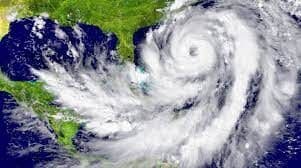How to inspect a roof for wind damage.

Inspecting a roof for wind damage is an important step in maintaining the integrity of the roof and protecting your home. Here are some steps you can follow to inspect a roof for wind damage:
- Look for visible damage: The first thing to do is to visually inspect the roof for any visible damage. This may include missing or broken shingles, dents or indentations in the roofing material, and loose or missing flashing. Be sure to look for damage on all parts of the roof, including the edges, valleys, and any protuberances such as vents and chimneys.
- Check for missing or damaged flashing: Flashing is the material that is used to seal the joints between the roof and other parts of the home, such as chimneys and vent pipes. High winds can cause flashing to become loose or to blow off completely, leaving the roof vulnerable to leaks. To check for damaged flashing, look for any gaps or openings where the flashing should be. If the flashing is loose, it will need to be repaired or replaced.
- Inspect the attic: After inspecting the roof from the outside, it’s a good idea to check the attic for any signs of wind damage. Look for any leaks or water stains on the ceiling or walls, as these can indicate that the roof is damaged and needs repair. In addition, check for any loose or damaged roof sheathing, which is the plywood or other material that forms the base of the roof.
- Check for damage to the roof structure: In some cases, wind damage may not be visible from the outside or in the attic. To check for damage to the roof structure, you may need to hire a professional inspector to assess the condition of the roof from the inside. This can involve inspecting the trusses, rafters, and other structural components of the roof to ensure that they are in good condition.
- Look for debris: After a windstorm, it’s common for debris to accumulate on the roof. This can include leaves, branches, and other debris that has been blown onto the roof by the wind. Be sure to remove any debris from the roof to prevent it from causing further damage.
By following these steps, you can inspect your roof for wind damage and take the necessary steps to repair any damage that is found. This will help ensure that your roof is in good condition and able to protect your home from the elements.
How to repair a roof with wind damage.

If your roof has sustained wind damage, it’s important to repair it as soon as possible to prevent further damage to your home. Here are some steps you can follow to repair a roof with wind damage:
- Make temporary repairs: If the roof is leaking or there is a lot of damage, you’ll need to make some temporary repairs to prevent further damage. This may involve placing a tarp over the damaged area or using roofing cement to seal any leaks. These repairs should be made as soon as possible after the wind damage occurs to prevent further damage to the roof and the interior of the home.
- Remove the damaged material: Once you’ve made temporary repairs, it’s time to remove the damaged material. This will involve taking off the damaged shingles and any flashing that is no longer in good condition. Be sure to dispose of the damaged material properly.
- Install new flashing: If any of the flashing was damaged, it will need to be replaced. Measure and cut the new flashing to fit, then secure it in place with nails or roofing cement.
- Install new shingles: Once the flashing is in place, you can install new shingles to replace the ones that were damaged. Start at the bottom of the roof and work your way up, overlapping the shingles as you go. Use roofing nails to secure the shingles in place, and be sure to seal the edges with roofing cement.
- Clean up the site: When you’re finished with the repairs, be sure to clean up the site and dispose of any debris. This will help prevent any additional damage to the roof or surrounding areas.
- Check for further damage: Once you’ve repaired the wind damage, it’s a good idea to have a professional inspect the roof to make sure there is no further damage. This will help ensure that your roof is in good condition and able to protect your home.

By following these steps, you can repair a roof that has sustained wind damage and restore it to its former condition. However, it’s important to note that roof repairs can be dangerous, especially if the roof is steep or the damage is extensive. If you’re not comfortable working on a roof, it’s best to hire a professional to handle the repairs.
How are roofs damaged by wind?
Wind is a common cause of roof damage, and it can be difficult to predict when a windstorm may occur. When wind gusts reach high speeds, they can cause shingles or tiles on a roof to become dislodged or torn, leaving the underlying structure of the roof vulnerable to water damage.
There are several ways in which wind can damage a roof. One common type of wind damage is known as “uplift,” which occurs when strong gusts of wind lift the shingles or tiles on a roof, causing them to become loose or detach from the roof entirely. Uplift can also cause damage to the underlying structure of the roof, such as the decking or rafters.
Another type of wind damage is known as “scouring,” which occurs when wind gusts carry small particles, such as sand or gravel, that abrade the surface of the roof. This can cause the shingles or tiles to become worn down or damaged, and it can also lead to leaks.
In addition to uplift and scouring, wind can also cause damage to a roof by tearing off shingles or tiles. When strong gusts of wind hit a roof, they can cause the shingles or tiles to become torn or ripped, leaving the underlying structure of the roof exposed to the elements.
Another way in which wind can damage a roof is by causing debris to be blown onto the roof. This can include branches, leaves, and other materials that can clog gutters and cause water to pool on the roof. This can lead to leaks and other water damage.
To prevent wind damage to a roof, it is important to make sure that the roof is properly installed and maintained. This includes ensuring that the shingles or tiles are securely fastened to the roof, as well as keeping the roof free of debris.
Wind is a powerful force that can cause significant damage to roofs. There are several ways that wind can damage a roof and understanding these types of damage can help homeowners take steps to prevent them.
- Shingle damage: High winds can cause shingles to become loose, curl, or break off completely. This type of damage is often caused by wind speeds of at least 50 mph, but it can occur at lower speeds in certain circumstances. For example, if the roof is already in poor condition or if the shingles are old and brittle, they may be more vulnerable to wind damage. Shingle damage can leave the roof vulnerable to leaks and further damage, and it may require repairs or even a complete roof replacement to fix.
- Flashing damage: Flashing is the material that is used to seal the joints between the roof and other parts of the home, such as chimneys and vent pipes. High winds can cause flashing to become loose or to blow off completely, leaving the roof vulnerable to leaks. Flashing damage can be caused by wind speeds of 50 mph or higher, and it can occur even when the shingles are in good condition. To repair flashing damage, the flashing will need to be removed and replaced.
- Tree damage: In some cases, high winds can cause trees or branches to fall on a roof, causing damage to the shingles and potentially even collapsing the roof. This type of damage is often caused by wind speeds of at least 60 mph, but it can occur at lower speeds if the tree is weak or diseased. To prevent tree damage, it’s important to regularly trim trees and remove any weak or diseased branches.
- Structural damage: In severe cases, high winds can cause structural damage to the roof itself, such as bending or collapsing the trusses that support the roof. This type of damage is typically caused by wind speeds of at least 80 mph, and it can be difficult to repair. Structural damage may require the services of a professional engineer to assess the extent of the damage and determine the best course of action.

To protect a roof from wind damage, it’s important to have it inspected regularly and to repair any damage as soon as it is discovered. In addition, homeowners can take steps to reduce the risk of wind damage by:
- Trimming trees regularly: Removing weak or diseased branches and keeping trees trimmed can help prevent them from falling on the roof during a windstorm.
- Securing loose objects: Anything that is not securely fastened to the ground, such as trash cans, outdoor furniture, and toys, can be picked up by the wind and blown onto the roof.
- Installing wind-resistant roofing materials: Some types of roofing materials, such as metal and concrete tiles, are more resistant to wind damage than others. If you live in an area with high winds, it may be worth considering these materials for your roof.
- Strengthening the roof structure: If you live in an area with very high winds, you may want to consider strengthening the roof structure to make it more resistant to wind damage. This could involve adding additional bracing or reinforcing the trusses with metal connectors.
By following these steps, you can help prevent wind damage to your roof and protect your home from the elements.